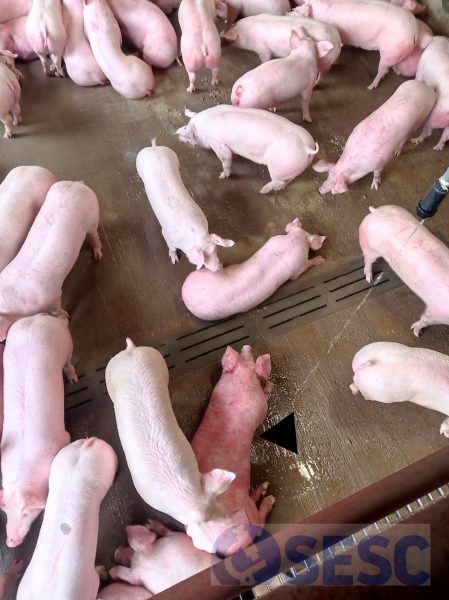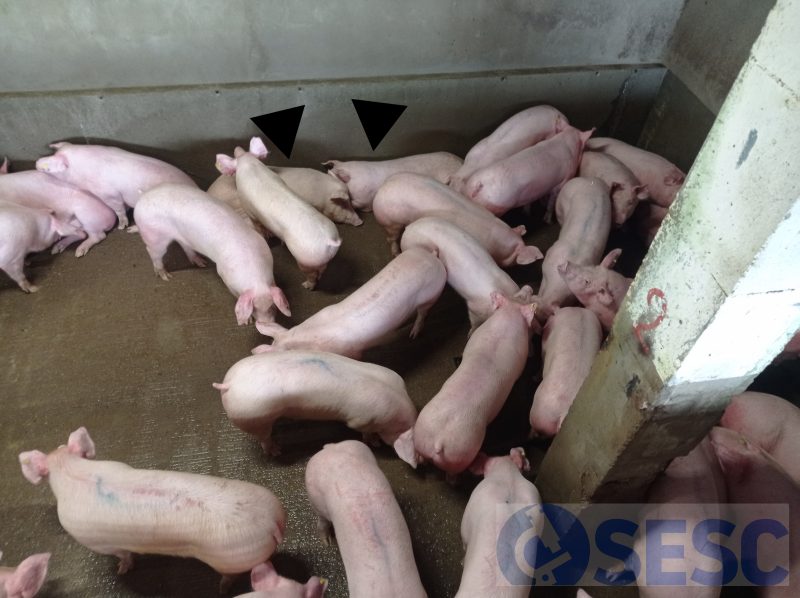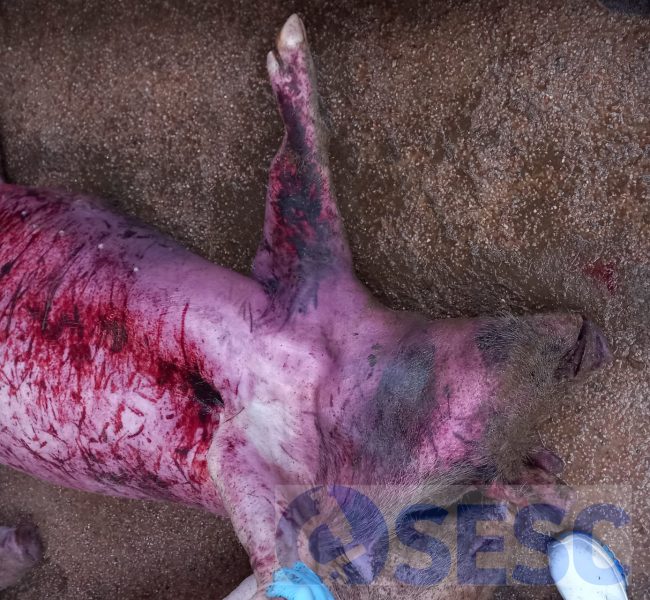Lesions associated with deficiencies in transport conditions in a batch of pigs
A batch of about 200 pigs from three different farms outside Catalonia arrives at the slaughterhouse after about 1000 km and 18 hours of travel. The animals were loaded at noon after 4 hours of fasting.
The ante-mortem inspection shows 6 casualties during transport and an additional one once the animals had been unloaded. In the remaining animals, depression, hyperemia and rectal temperatures of between 37 and 39.5ºC were observed. The animals that were found dead had skin lesions, bruises, wounds, and erythema on their skin and ears, among other lesions.
This casuistry generated a suspicion of African swine fever (ASF) which was ruled out by PCR.
Post-mortem inspection of the animals that arrived alive showed reddened lymph nodes, hemorrhagic skin lesions, and pallor of ham muscles. The inspectors wanted to rule out an infectious process aggravated by the stress associated with transport and sent samples from two carcasses condemned due to severe organoleptic changes (classified as febrile meat/sepsis).
The histopathological study did not show any lesions compatible with any infectious-contagious process and concluded that the observed lesions could be explained by traumatic injuries due to fights between animals and possible death from hyperthermia associated with transport stress (ultimately the mechanism leading to death is a vasogenic shock). The redness of the lymph nodes was due to a drainage of extravasated blood and not to actual bleeding in these organs.
In this case a combination of different factors should be considered. First of all, it is important to keep in mind that pigs are very sensitive to the movement and vibration of the truck (just like us) when compared to other livestock species. This makes them more easily carsick, and this is more likely to occur if the stomach is full after eating than if a few hours have passed. The digestion of food always generates an increase in temperature and when the animals are carsick, it is also accompanied by an increase in body temperature (in humans we detect it by the typical cold sweat). Pigs do not sweat and their main means of losing temperature is to lie down on wet areas, a behavior they cannot do in a truck, so all they have left is the alternative of panting. But pigs are not good at panting compared to other species, such as dogs, since they have a small opening angle and a short tongue that does not protrude too far from the mouth. Consequently, as they have difficulty losing temperature, we must try not to gain it.
Ideally, to prevent loading animals that are still digesting and reduce the risk of carsickness (both of which increase body temperature), it is advisable for pigs to fast before boarding the truck for 6 to 8 hours. At the same time, however, in order to prevent the animals from being more nervous due to the accumulated hunger, it is recommended that the total fasting until the time of slaughter does not exceed 16-18 hours. Therefore, in long journeys, which should otherwise be avoided, it is not a bad strategy to reduce fasting to 4 hours before transport, which would be the minimum recommended time. The problem is: the moment of loading is the most stressful since the animal leaves its comfort zone (its usual pen) and is invited (sometimes in a hurry sometimes with less) to abandon it and get on the truck. The stress response itself will lead to an increase in body temperature which will add to the increase in temperature produced by the muscular exercise (more or less intense depending on the handling of the farmer) of the animal when leaving the pen and getting on the truck. The moment the truck starts and picks up speed the air enters the cage of the truck and helps the pigs lose temperature and after a while, hopefully, the temperature will go down and normalize thanks to convection losses.
In this case, however, the transport made three different loads on three different farms. This means that probably the truck stopped before the animals loaded on the first farm had time to lose enough temperature. When the truck stops with animals that are trying to lose body temperature, an unbearable microclimate can take place very quickly, especially in the central and front parts of the truck (behind the cabin) which makes it very difficult to lose temperature.
When the truck stops, especially during longer stops, something else will happen, when pigs are mixed with unfamiliar animals, they will decide to fight to establish new hierarchies. While the truck is moving the animals usually avoid fighting too much as they have other concerns. But if there is a long enough stop, since they are in a small space, the fights can be very intense and this complicates everything even more, as it adds to the heat they were already carrying due to the stress and physical exercise of the load, a digestion still active, the risk of having a certain dizziness, the poor ventilation due to the lack of vehicle movement and the brutal increase in temperature as a consequence of the fighting.
In conclusion, the risk factors to consider are:
- Avoid long journeys. Because in order not to have problems at the destination we can have them at the beginning of the transport.
- Establish ideal fasting times of 6 hours before transport and not exceed 16 hours of total fasting until the time of slaughter.
- Keep in mind that for the first 2 hours after loading no stopping should be done to keep the animals well ventilated at all times.
- Keep in mind that mixing unfamiliar animals should always be avoided, but especially if a stop will take place that will allow them to fight.
The lesion observed in the images below are typical of fights between pigs, due to the position they occupy in the body: central part and shoulder of the animal, which are the targeted areas when two pigs fight. Once the animal is exhausted or dying, other lesions may occur due to accidental trampling in a confined environment.
We would like to thank Dr. Antoni Dalmau of the IRTA Animal Welfare Program, his contributions and the revision of this entry. (EV)
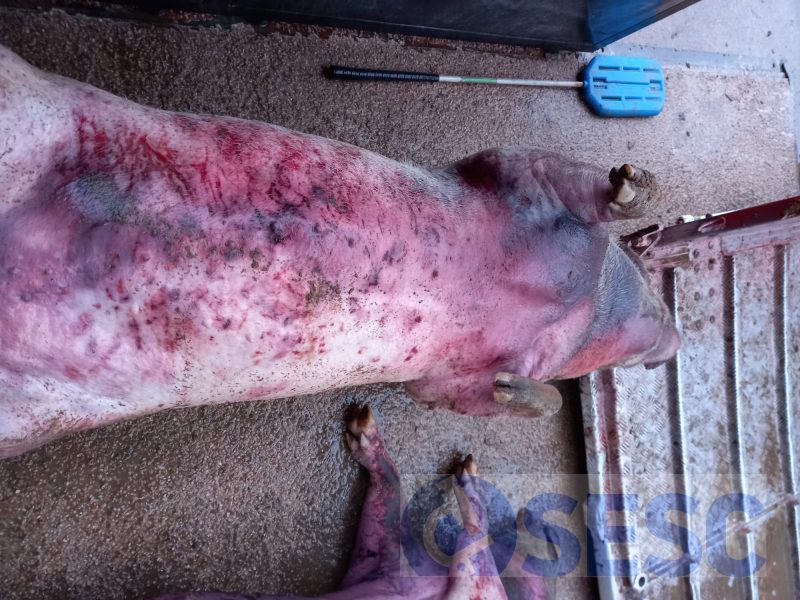
Hemorrhagic skin lesions (petechiae, ecchymoses, hematomas) in one of the animals that died during transport.
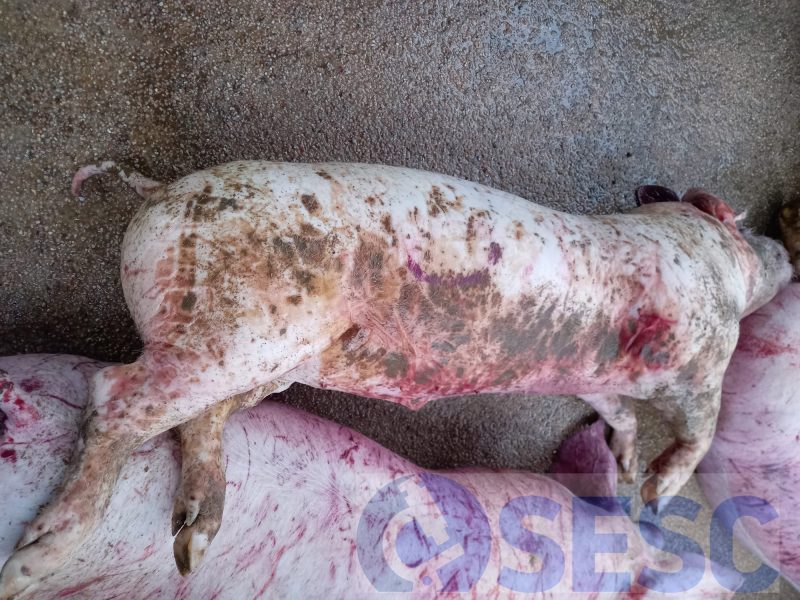
Hemorrhagic skin lesions (petechiae, ecchymoses, hematomas) in one of the animals that died during transport.
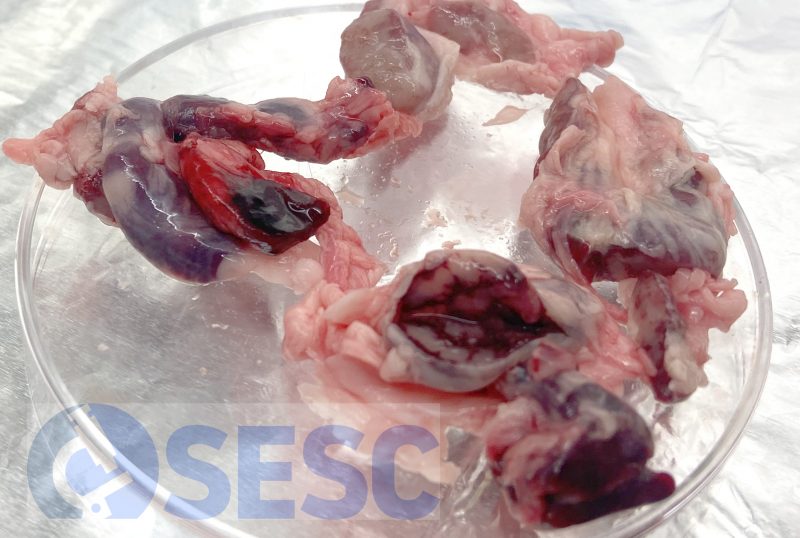
Lymph nodes with blood reabsorption (reddening of the subcapsular and peritrabecular sinuses, as opposed to diffuse reddening that would suggest hemorrhage in the lymph node).

